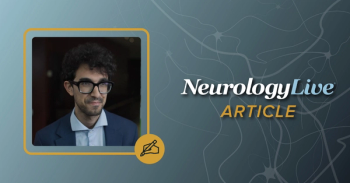Using the National Association of Epilepsy Centers 2019 annual report and supplemental survey data from directors of US epilepsy centers, findings showed that epilepsy surgery procedure volumes are influenced by center region and other characteristics such as center accreditation level, institution type, and resources.1
Led by Kristen H. Arredondo, MD, pediatric neurologist, UT Health Austin, and colleagues aimed to describe center attributes associated with reported utilization of specific surgical techniques. The investigators merged data from the 2019 annual report and responses from a supplemental survey on epilepsy surgery practices from 206 adult epilepsy center directors and 136 pediatric epilepsy center directors in the US. The overall response rate was 100%, though some fields were not completed across all respondents.
Among 352 observations included in the analysis, level 4 epilepsy monitoring unit (EMU) centers accounted for 280 (80%) of the observations, and 211 (62%) were characterized as academic/university type institutions. Degree of missingness for all variables was less than 4%, and investigators only reported on statistically significant outcomes. Multivariable modeling with zero-inflated Poisson regression models were used to present odds ratios (OR) and incidence rate ratios (IRRs) of receiving a given surgery type based on center characteristics.
Odds for laser interstitial thermal therapy (LITT), performed in 131 patients, were greater in the West region (vs South; OR, 2.4; 95% CI, 1.12-5.13; P = .024) and were lower at level 3 (vs level 4; OR, 0.12; 95% CI, 0.04-0.39; P <.001) and private practice (vs academic; OR, 0.26; 95% CI, 0.09-0.7; P = .008) centers. For temporal lobectomy, characteristics associated with higher odds included location in the Midwest region (vs South; OR, 2.43; 95% CI, 1.04-5.66; P = .039), West region (vs South; OR, 2.8; 95% CI, 1.19-6.62; P = .019) and greater utilization of intraoperative electrocorticography (ECOG; OR, 1.23; 95% CI, 1.12-1.36; P <.001).
The odds of performing potentially curative strategies, which included temporal lobectomy, extratemporal resection, LITT, and hemispherotomy/ectomy, were higher at centers with image-guided robotics, and treatment rates were higher at center with MEG. Except for hemispherotomy/ectomy, treatment rates were higher for each potentially curative procedure at centers with a greater number of epileptologists with at least 2 years of fellowship training.
At least 1 hemispherotomy/ectomy was reported by directors at 63 levels 4 centers, most of whom (57%) were at pediatric-only centers. Odds for this procedure were higher in centers in the Midwest (vs South; OR, 3.96; 95% CI, 1.17-13.43; P = .027) and those who reported greater utilization of intraoperative ECOG (OR, 1.26; 95% CI, 1.09-1.46; P = .001). In contrast to LITT, the odds (OR, 12.71; 95% CI, 3.4-47.49; P <.001) and treatment rates (OR, 4.62; 95% CI, 2.04-10.47; P <.001) were higher when reported by pediatric center directors.
Dravet Syndrome Agent STK-001 Continues to Demonstrate Safety in Ongoing Phase 1/2a
The ongoing phase 1/2a MONARCH study continued to display a well-tolerated safety profile for single and multiple doses of STK-001 in children and adolescents with Dravet Syndrome.
Palliative surgeries included vagus nerve stimulation (VNS) implantation, remote electrical surgery (RNS) implantation, and corpus callosotomy. For VNS implantation, the odds of this procedure were lower in the Northeast (vs South; OR, 0.45; 95% CI, 0.21-0.96; P = .039), with treatment rates that were higher in centers with access to magnetoencephalography (OR, 1.18; 95% CI, 1.07-1.31; P = .001) and single-photon emission computerized tomography (SPECT; OR, 1.2; 95% CI, 1.07-1.35; P = .002) or those in the Midwest (OR, 1.18; 95% CI, 1.07-1.31; P = 001) and West (OR, 1.47; 95% CI, 1.33-1.62; P <.001) compared with the South region.
Odds of RNS implantation were greater in the West region (vs South; OR, 2.72; 95% CI, 1.15-6.45; P = .023) and those who reported a greater percentage of surgeries performed with ECOG (OR, 1.18; 95% CI, 1.07-1.31; P = .001). Similarly, treatment rates were higher in the Midwest (OR, 1.45; 95% CI, 1.1-1.91; P = .008) and West (OR, 1.91; 95% CI, 1.49-2.44; P <.0010) than in the South. The treatment rate was lower at centers with greater utilization of intraoperative ECOG (OR, 0.96; 95% CI, 0.93-0.98; 0.003), with access to SPECT (OR, 0.63; 95% CI, 0.49-0.81).
Arredondo et al concluded that, "future work should examine the largescale effects of referral collaborations, location and payer mix on access to epilepsy surgery. Additionally, comparative study of the impact of variation in presurgical testing and choice of surgery on patient outcomes and cost are urgently needed."
REFERENCE
1. Arredondo KH, Ahrens SM, Bagic AI, et al. Association between characteristics of national association of epilepsy centers and reported utilization of specific surgical techniques. Neurology. Published online November 2, 2022. doi:10.1212/WNL.0000000000201526




























